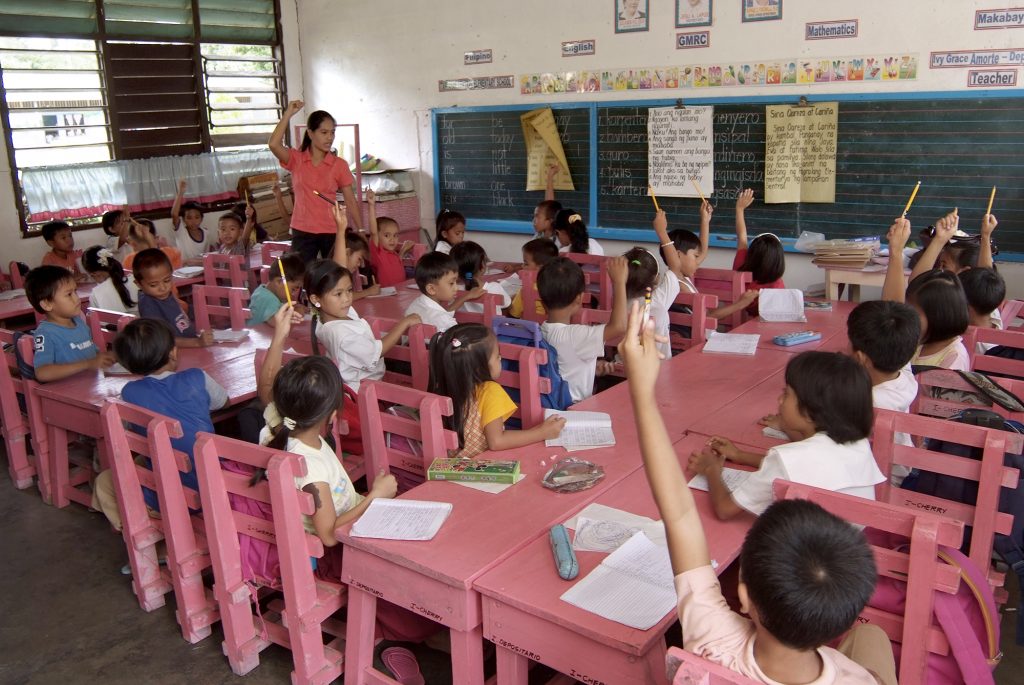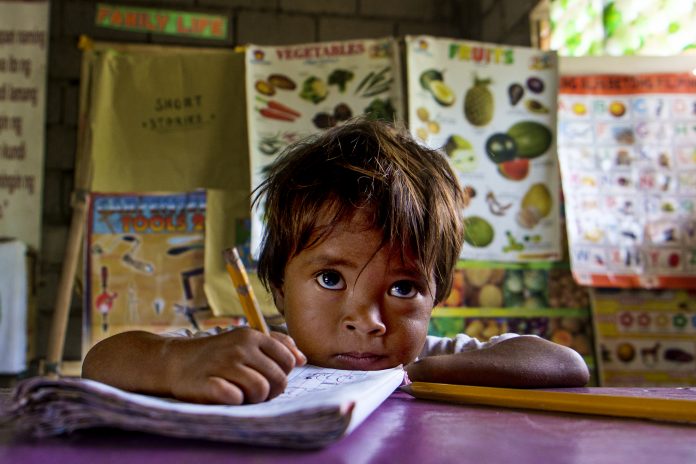Ang “katekismo series” na ito ay para sa lahat, mula bata hanggang sa mga nakakatanda. Ito ay ibinihagi ni Father Christian Buenafe, O.Carm, upang mas maintindihan ng mga Katoliko, pati na rin ng mga ‘di Katoliko, ang ibig sabihin ng pananampalataya, paniniwala, at “everything under the sun.”
Teacher: Hello, class. Musta na kayo? Na miss nyo ba ako?
Students: OK naman po kami, teacher. Na miss namin kayo pero “slight” lang. Teacher, masaya po kayo ngayon?
Teacher: Oo naman, class. Palagi akong masaya pag kasama ko kayo. Lalo na ngayon, may bago na naman tayong matututunan.
Ano ang gusto nyong matutunan ngayon? “What do you want to learn?” Tapos na tayo sa “topics” ng kaibahan ng “worship” sa “veneration,” ang palaging naririnig natin na “idolatry,” “the art of storytelling” at di dapat “selective text reading,” “about angels,” at ang tungkol sa Sto. Nino, tungkol sa “Sacramentals.”
So, class, ano ang gusto nyong talakayin natin ngayon?
Student 1: Teacher, pwede po bang malaman ang tungkol sa “Communion of Saints” kasi palagi kong naririnig yan na “words” sa “Apostles’ Creed.”
Teacher: Ah OK, class. Ang “Communion of Saints” ay binubuo ng mga “Christians” na buhay na nasa mundo, ibig sabihin tayong mga Kristiyano, ang ating mga nahimlay na mga kapatid o “the faithful departed” na kung tawagin, at ang mga Banal na tao o ang “saints in heaven.”
Student 2: Aaaaa… Bakit, teacher?
Teacher: “God himself has made all of us holy by drawing us to himself in Christ. It is for this reason, class, that St. Paul said all those who believe in Christ are called to be ‘saints’ and ‘holy ones.” (Rom 1:7; 2 Cor 1:1; Eph 1:1).
So lahat na naniniwala kay Jesus, buhay man o patay na, ang mga banal ng Diyos ay ang bumubuo ng tinatawag nating “Communion of Saints.” (Hirmer 2007)
Student 3: Tapos, teacher, ano ang gagawin natin ngayon? bilang mga tao, mga namatay na, at ang mga banal?
Teacher: Class, tayo, “we who belong to the ‘Communion of Saints,’ continue to love each other, pray for each other and help each other,” kahit saan man tayo, sa mundo, sa langit, o sa “purgatory.”
Kaya di ba, “we ask the intercession of the saints,” sumasagot nga tayo ng “pray for us” pag na “invoke” natin ang “names” nila. Tapos, ipinapanalangin din natin ang mga patay kasi naniniwala tayong kailangan natin silang i-“pray,” tapos “we pray for one another.”
Kaya sa Banal na Misa, may “Prayers of the Faithful” na tinatawag, “prayer of the Church” din.
Student 4: Ah, purgatory? Saan po yan, teacher?
Teacher: Ang Latin word ay “pugare” which means to “purify.” Ayon sa “Catechism of Filipino Catholics,” ang purgatory ay “the state of final purification.”
“Based on its ancient liturgical practice of offering prayers for the departed,” yong mga namatay na. “This was done so that they might be purified and be accepted into heaven. Holy Scriptures speak of such prayers for the dead: ‘Thus Judas made atonement for the dead that they might be freed from sin” (2 Macabees 12:46).
“Scriptures also speak of a purifying fire: ‘the person will be saved, but only through fire”(1 Cor 3:15; 1 Pet 1:1:7 ) (Tan 2008).
So, class, ang “purgatory” ay parang isang “state of purification, to purify, to purge, to clean.” Kaya ang mga namatay nating mga kakilala ay palaging ipinagdarasal natin kasi yan ang “Communion of Saints,” nagtutulungan, nagdarasal sa bawat isa. So, alam nyo na, class?

Student 6: Eh teacher, kwento po kayo ng tungkol sa “heaven at hell?”
Teacher: Class, sa ibang araw na yan. OK na ba tayo sa “Communion of Saints?”
Students: Opo. Salamat po, teacher.
Teacher: OK Class. Ang “assignment” ninyo ay ganito: First, sino ang kilala mong santo o banal na tao na meron kang debosyon sa kanya? Second, sino ang palagi mong pini-“pray,” yong buhay na tao? At third, sino ang kilala mong namatay na at palagi mo siyang pini-“pray” na sana naka-“rest in peace” na siya, sa “peace ng Panginoon? Clear, class?
Students: Opo, teacher. Bye, teacher. Thanks po.
Teacher: See you sa next klase natin sa Flores de Mayo. Ang snacks natin ngayon ay sponsored ng ating BEC Youth, mag-“thank you” kayo kina ate at kuya ha. Tapos mag “physical distancing” kayo.
Class, baka mamaya mag “balutin mo ako” kayo ha. Isauli nyo ang mga tinidor ha kahit “anemic” ang “spaghetti” at walang gaanong sahog, wag kayong maarte kasi libre lang ang snacks. Bye, class.









